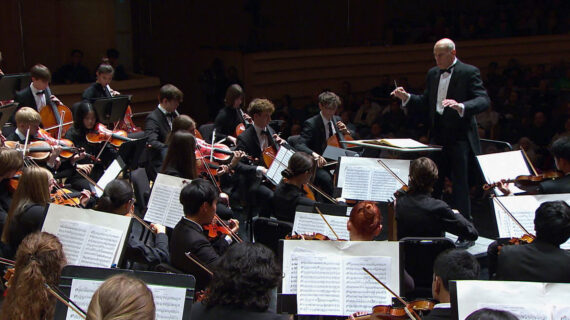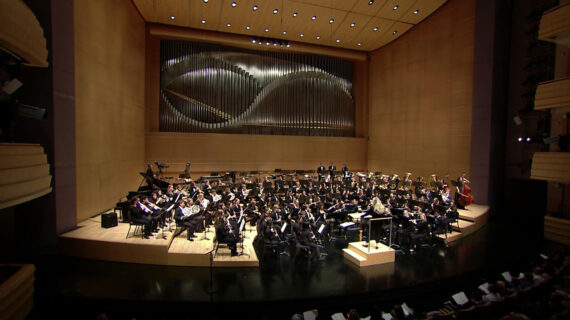Frederica Freyberg:
Now to the Great Lakes, where a new study says plastic particles could be damaging the ecosystem. The research out of UW-Superior says each of the Great Lakes has the plastic in the water. But where does it come from and what damage could it cause? We take those questions to UW-Superior assistant professor, Lorena Rios-Mendoza, who is conducting the study. She joins us from Superior. Dr. Mendoza, thanks very much for doing so.
Lorena Rios-Mendoza:
Thank you for having me.
Frederica Freyberg:
What did your research of plastic in the Great Lakes show?
Lorena Rios-Mendoza:
You know, my research showed that the plastic debris is an environmental issue in the ocean and now in the Great Lakes. I have been working with the plastic debris and I found that the plastics have a huge capacity to absorb persistent organic pollutants. And some of these compounds are an endocrine disruptor, and the EPA, the Environmental Protection Agency, classified some of these kinds of compounds as a priority contaminant. And the main problem is the plastic is not biodegradable. It's just photodegradable. What this means is that the plastic gets harder and harder and then it's easy to break into smaller and smaller pieces. And when the plastic particulates is very small, like one millimeter in size, it can absorb more of this kind of toxic compounds.
Frederica Freyberg:
Now, which– Excuse me, doctor. Which of the lakes has the highest concentrations of these plastic particles?
Lorena Rios-Mendoza:
We found that last summer, in Lake Erie, we found a lot of this plastic particulates. We found they ranged between 500 to 650,000 pieces of plastic. And we found very small sizes, like one millimeter in size, very perfectly rounded micro-plastic pellets.
Frederica Freyberg:
And so your hypothesis on that is that these are the tiny, plastic beads from like face wash, face scrubbing washes. And each of the lakes had these particulates that we see depicted in this photo with that penny for kind of context as to how small they are. But each of the lakes showed these tiny, little scrubbing beads?
Lorena Rios-Mendoza:
That I found in Lake Superior was more filaments of plastic. In Lake Michigan, we have more of the fragments and different shapes. In Lake Erie is where we found this micro-pellets. And I know for another group that has studied the plastic in Lake Huron, they have pre-production plastic. They found it.
Frederica Freyberg:
Did the discovery that some of this plastic particulate matter came from these face scrubbing products surprise you?
Lorena Rios-Mendoza:
Yes. Yes, it surprised me, you know, because I was thinking of, you know, the pre-production plastic that is the size in this pellets is five millimeters. But these very, very teeny micro-pellets, yes, they surprised me. Because, you know, it’s very easily that the organisms in the ocean and the lakes can eat it, confused by the natural food.
Frederica Freyberg:
And when you presented the manufacturers, which I understand you or others in the study group did, of the– with the face scrubs, evidence of the plastic in the lakes, did they respond, the manufacturers of these products?
Lorena Rios-Mendoza:
Yes. The Institute, they talked with the industry. And they said that maybe they try to do it in, I don’t know, in 2017? They want to change again to the natural products. But we don’t know.
Frederica Freyberg:
That’s rather promising, I would say. What’s next in your research?
Lorena Rios-Mendoza:
The next that I want to do is take samples very close to the wastewater treatment plants to see if, really, we can catch these micro-pellets particles, and analyze different brand names of these scrub products to see if– how much plastic they put in each container.
Frederica Freyberg:
Great. Well, Dr. Mendoza, thank you very much for your work.
Lorena Rios-Mendoza:
Thank you.
Search Episodes
Related Stories from PBS Wisconsin's Blog

Donate to sign up. Activate and sign in to Passport. It's that easy to help PBS Wisconsin serve your community through media that educates, inspires, and entertains.
Make your membership gift today
Only for new users: Activate Passport using your code or email address
Already a member?
Look up my account
Need some help? Go to FAQ or visit PBS Passport Help
Need help accessing PBS Wisconsin anywhere?

Online Access | Platform & Device Access | Cable or Satellite Access | Over-The-Air Access
Visit Access Guide
Need help accessing PBS Wisconsin anywhere?

Visit Our
Live TV Access Guide
Online AccessPlatform & Device Access
Cable or Satellite Access
Over-The-Air Access
Visit Access Guide
 Passport
Passport








Follow Us